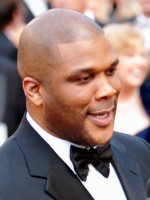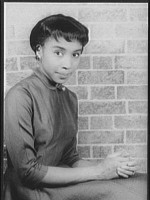Maya Angelou is a Actor, Director, Scriptwriter, Producer, Music and Poem American born on 4 april 1928 at St. Louis (USA)

Maya Angelou (Listen/ˈmaɪ.ə ˈændʒəloʊ/; born Marguerite Annie Johnson; April 4, 1928 – May 28, 2014) was an American author, poet, and civil rights activist. She published seven autobiographies, three books of essays, and several books of poetry, and was credited with a list of plays, movies, and television shows spanning over 50 years. She received dozens of awards and more than 50 honorary degrees. Angelou is best known for her series of seven autobiographies, which focus on her childhood and early adult experiences. The first, I Know Why the Caged Bird Sings (1969), tells of her life up to the age of 17 and brought her international recognition and acclaim.
She became a poet and writer after a series of occupations as a young adult, including fry cook, prostitute, nightclub dancer and performer, cast member of the opera Porgy and Bess, coordinator for the Southern Christian Leadership Conference, and journalist in Egypt and Ghana during the decolonization of Africa. She was an actor, writer, director, and producer of plays, movies, and public television programs. In 1982, she earned the first lifetime Reynolds Professorship of American Studies at Wake Forest University in Winston-Salem, North Carolina. She was active in the Civil Rights movement, and worked with Martin Luther King, Jr. and Malcolm X. Beginning in the 1990s, she made around 80 appearances a year on the lecture circuit, something she continued into her eighties. In 1993, Angelou recited her poem "On the Pulse of Morning" (1993) at President Bill Clinton's inauguration, making her the first poet to make an inaugural recitation since Robert Frost at President John F. Kennedy's inauguration in 1961.
With the publication of I Know Why the Caged Bird Sings, Angelou publicly discussed aspects of her personal life. She was respected as a spokesperson for black people and women, and her works have been considered a defense of Black culture. Attempts have been made to ban her books from some U.S. libraries, but her works are widely used in schools and universities worldwide. Angelou's major works have been labeled as autobiographical fiction, but many critics have characterized them as autobiographies. She made a deliberate attempt to challenge the common structure of the autobiography by critiquing, changing, and expanding the genre. Her books center on themes such as racism, identity, family, and travel.
Maya Angelou, 1999
I also wear a hat or a very tightly pulled head tie when I write. I suppose I hope by doing that I will keep my brains from seeping out of my scalp and running in great gray blobs down my neck, into my ears, and over my face.
Maya Angelou, 1984
Nothing so frightens me as writing, but nothing so satisfies me. It's like a swimmer in the [English] Channel: you face the stingrays and waves and cold and grease, and finally you reach the other shore, and you put your foot on the ground—Aaaahhhh!
Maya Angelou, 1989
Evidence suggests that Angelou was partially descended from the Mende people of West Africa. A 2008 PBS documentary found that Angelou's maternal great-grandmother Mary Lee, who had been emancipated after the Civil War, became pregnant by her white former owner, John Savin. Savin forced Lee to sign a false statement accusing another man of being the father of her child. After Savin was indicted for forcing Lee to commit perjury, and despite the discovery that Savin was the father, a jury found him not guilty. Lee was sent to the Clinton County poorhouse in Missouri with her daughter, Marguerite Baxter, who became Angelou's grandmother. Angelou described Lee as "that poor little Black girl, physically and mentally bruised."
The details of Angelou's life described in her seven autobiographies and in numerous interviews, speeches, and articles tended to be inconsistent. Critic Mary Jane Lupton has explained that when Angelou spoke about her life, she did so eloquently but informally and "with no time chart in front of her". For example, she was married at least twice, but never clarified the number of times she had been married, "for fear of sounding frivolous"; according to her autobiographies and to Gillespie, she married Tosh Angelos in 1951 and Paul du Feu in 1973, and began her relationship with Vusumzi Make in 1961, but never formally married him. Angelou had one son Guy, whose birth was described in her first autobiography, one grandson, and two great-grandchildren, and according to Gillespie, a large group of friends and extended family. Angelou's mother Vivian Baxter died in 1991 and her brother Bailey Johnson, Jr., died in 2000 after a series of strokes; both were important figures in her life and her books. In 1981, the mother of her son Guy's child disappeared with Angelou's grandson; it took four years to find him.
In 2009, the gossip website TMZ erroneously reported that Angelou had been hospitalized in Los Angeles when she was alive and well in St. Louis, which resulted in rumors of her death and according to Angelou, concern among her friends and family worldwide. In 2013, Angelou told her friend Oprah Winfrey that she had studied courses offered by the Unity Church, which were spiritually significant to her. She did not earn a university degree, but according to Gillespie it was Angelou's preference that she be called "Dr. Angelou" by people outside of her family and close friends. She owned two homes in Winston-Salem, North Carolina, and a "lordly brownstone" in Harlem, which was purchased in 2004 and was full of her "growing library" of books she collected throughout her life, artwork collected over the span of many decades, and well-stocked kitchens. Younge reported that in her Harlem home resides several African wall hangings and Angelou's collection of paintings, including ones of several jazz trumpeters, a watercolor of Rosa Parks, and a Faith Ringgold work entitled "Maya's Quilt Of Life".
According to Gillespie, she hosted several celebrations per year at her main residence in Winston-Salem; "her skill in the kitchen is the stuff of legend—from haute cuisine to down-home comfort food". The Winston-Salem Journal stated, "Securing an invitation to one of Angelou’s Thanksgiving dinners, Christmas tree decorating parties or birthday parties was among the most coveted invitations in town". The New York Times, describing Angelou's residence history in New York City, stated that she regularly hosted elaborate New Year's Day parties. She combined her cooking and writing skills in her 2004 book Hallelujah! The Welcome Table, which featured 73 recipes, many of which she learned from her grandmother and mother, accompanied by 28 vignettes. She followed up with her second cookbook, Great Food, All Day Long: Cook Splendidly, Eat Smart in 2010, which focused on weight loss and portion control.
Beginning with I Know Why the Caged Bird Sings, Angelou used the same "writing ritual" for many years. She would wake early in the morning and check into a hotel room, where the staff was instructed to remove any pictures from the walls. She would write on legal pads while lying on the bed, with only a bottle of sherry, a deck of cards to play solitaire, Roget's Thesaurus, and the Bible, and would leave by the early afternoon. She would average 10–12 pages of written material a day, which she edited down to three or four pages in the evening. Angelou went through this process to "enchant" herself, and as she said in a 1989 interview with the British Broadcasting Corporation, "relive the agony, the anguish, the Sturm und Drang." She placed herself back in the time she wrote about, even traumatic experiences like her rape in Caged Bird, in order to "tell the human truth" about her life. Angelou stated that she played cards in order to get to that place of enchantment and in order to access her memories more effectively. She stated, "It may take an hour to get into it, but once I'm in it—ha! It's so delicious!" She did not find the process cathartic; rather, she found relief in "telling the truth".
Source : Wikidata
Maya Angelou

Birth name Marguerite Annie Johnson
Nationality USA
Birth 4 april 1928 at St. Louis (USA)
Death 28 may 2014 (at 86 years) at Winston-Salem (USA)
Nationality USA
Birth 4 april 1928 at St. Louis (USA)
Death 28 may 2014 (at 86 years) at Winston-Salem (USA)
She became a poet and writer after a series of occupations as a young adult, including fry cook, prostitute, nightclub dancer and performer, cast member of the opera Porgy and Bess, coordinator for the Southern Christian Leadership Conference, and journalist in Egypt and Ghana during the decolonization of Africa. She was an actor, writer, director, and producer of plays, movies, and public television programs. In 1982, she earned the first lifetime Reynolds Professorship of American Studies at Wake Forest University in Winston-Salem, North Carolina. She was active in the Civil Rights movement, and worked with Martin Luther King, Jr. and Malcolm X. Beginning in the 1990s, she made around 80 appearances a year on the lecture circuit, something she continued into her eighties. In 1993, Angelou recited her poem "On the Pulse of Morning" (1993) at President Bill Clinton's inauguration, making her the first poet to make an inaugural recitation since Robert Frost at President John F. Kennedy's inauguration in 1961.
With the publication of I Know Why the Caged Bird Sings, Angelou publicly discussed aspects of her personal life. She was respected as a spokesperson for black people and women, and her works have been considered a defense of Black culture. Attempts have been made to ban her books from some U.S. libraries, but her works are widely used in schools and universities worldwide. Angelou's major works have been labeled as autobiographical fiction, but many critics have characterized them as autobiographies. She made a deliberate attempt to challenge the common structure of the autobiography by critiquing, changing, and expanding the genre. Her books center on themes such as racism, identity, family, and travel.
Biography
I make writing as much a part of my life as I do eating or listening to music.Maya Angelou, 1999
I also wear a hat or a very tightly pulled head tie when I write. I suppose I hope by doing that I will keep my brains from seeping out of my scalp and running in great gray blobs down my neck, into my ears, and over my face.
Maya Angelou, 1984
Nothing so frightens me as writing, but nothing so satisfies me. It's like a swimmer in the [English] Channel: you face the stingrays and waves and cold and grease, and finally you reach the other shore, and you put your foot on the ground—Aaaahhhh!
Maya Angelou, 1989
Evidence suggests that Angelou was partially descended from the Mende people of West Africa. A 2008 PBS documentary found that Angelou's maternal great-grandmother Mary Lee, who had been emancipated after the Civil War, became pregnant by her white former owner, John Savin. Savin forced Lee to sign a false statement accusing another man of being the father of her child. After Savin was indicted for forcing Lee to commit perjury, and despite the discovery that Savin was the father, a jury found him not guilty. Lee was sent to the Clinton County poorhouse in Missouri with her daughter, Marguerite Baxter, who became Angelou's grandmother. Angelou described Lee as "that poor little Black girl, physically and mentally bruised."
The details of Angelou's life described in her seven autobiographies and in numerous interviews, speeches, and articles tended to be inconsistent. Critic Mary Jane Lupton has explained that when Angelou spoke about her life, she did so eloquently but informally and "with no time chart in front of her". For example, she was married at least twice, but never clarified the number of times she had been married, "for fear of sounding frivolous"; according to her autobiographies and to Gillespie, she married Tosh Angelos in 1951 and Paul du Feu in 1973, and began her relationship with Vusumzi Make in 1961, but never formally married him. Angelou had one son Guy, whose birth was described in her first autobiography, one grandson, and two great-grandchildren, and according to Gillespie, a large group of friends and extended family. Angelou's mother Vivian Baxter died in 1991 and her brother Bailey Johnson, Jr., died in 2000 after a series of strokes; both were important figures in her life and her books. In 1981, the mother of her son Guy's child disappeared with Angelou's grandson; it took four years to find him.
In 2009, the gossip website TMZ erroneously reported that Angelou had been hospitalized in Los Angeles when she was alive and well in St. Louis, which resulted in rumors of her death and according to Angelou, concern among her friends and family worldwide. In 2013, Angelou told her friend Oprah Winfrey that she had studied courses offered by the Unity Church, which were spiritually significant to her. She did not earn a university degree, but according to Gillespie it was Angelou's preference that she be called "Dr. Angelou" by people outside of her family and close friends. She owned two homes in Winston-Salem, North Carolina, and a "lordly brownstone" in Harlem, which was purchased in 2004 and was full of her "growing library" of books she collected throughout her life, artwork collected over the span of many decades, and well-stocked kitchens. Younge reported that in her Harlem home resides several African wall hangings and Angelou's collection of paintings, including ones of several jazz trumpeters, a watercolor of Rosa Parks, and a Faith Ringgold work entitled "Maya's Quilt Of Life".
According to Gillespie, she hosted several celebrations per year at her main residence in Winston-Salem; "her skill in the kitchen is the stuff of legend—from haute cuisine to down-home comfort food". The Winston-Salem Journal stated, "Securing an invitation to one of Angelou’s Thanksgiving dinners, Christmas tree decorating parties or birthday parties was among the most coveted invitations in town". The New York Times, describing Angelou's residence history in New York City, stated that she regularly hosted elaborate New Year's Day parties. She combined her cooking and writing skills in her 2004 book Hallelujah! The Welcome Table, which featured 73 recipes, many of which she learned from her grandmother and mother, accompanied by 28 vignettes. She followed up with her second cookbook, Great Food, All Day Long: Cook Splendidly, Eat Smart in 2010, which focused on weight loss and portion control.
Beginning with I Know Why the Caged Bird Sings, Angelou used the same "writing ritual" for many years. She would wake early in the morning and check into a hotel room, where the staff was instructed to remove any pictures from the walls. She would write on legal pads while lying on the bed, with only a bottle of sherry, a deck of cards to play solitaire, Roget's Thesaurus, and the Bible, and would leave by the early afternoon. She would average 10–12 pages of written material a day, which she edited down to three or four pages in the evening. Angelou went through this process to "enchant" herself, and as she said in a 1989 interview with the British Broadcasting Corporation, "relive the agony, the anguish, the Sturm und Drang." She placed herself back in the time she wrote about, even traumatic experiences like her rape in Caged Bird, in order to "tell the human truth" about her life. Angelou stated that she played cards in order to get to that place of enchantment and in order to access her memories more effectively. She stated, "It may take an hour to get into it, but once I'm in it—ha! It's so delicious!" She did not find the process cathartic; rather, she found relief in "telling the truth".
Usually with
Filmography of Maya Angelou (12 films)
Actress

The Black Candle (2009)
Directed by M. K. Asante
Genres Documentary
Themes Films set in Africa
Actors Maya Angelou, Chuck D
Roles Self - Narrator
Rating67%





The Black Candle uses Kwanzaa as a vehicle to explore and celebrate the African-American experience.
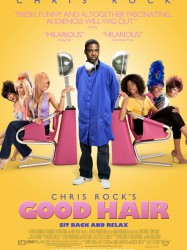
Good Hair (2009)
, 1h36Origin USA
Genres Comedy, Documentary
Actors Chris Rock, Maya Angelou, Nia Long, Al Sharpton, Raven-Symoné, Ice-T
Roles Self
Rating68%






Madea's Family Reunion (2006)
, 1h47Directed by Tyler Perry
Origin USA
Genres Drama, Comedy, Comedy-drama, Romance
Themes Théâtre, Films based on plays
Actors Blair Underwood, Tyler Perry, Lynn Whitfield, Jenifer Lewis, Rochelle Aytes, Boris Kodjoe
Roles May
Rating53%





While planning her family reunion, the pistol-packing grandma, Madea (Tyler Perry), must contend with the other dramas on her plate, including the runaway who has been placed under her care and her troubled nieces, half-sisters Lisa and Vanessa. Her niece Lisa is engaged and has an abusive fiancé and informs her mother but is ignored due to her mother's greed. Vanessa is trying to find love while struggling to forgive her mother for allowing her stepfather to rape her numerous times in her younger teen years. Madea is on to help fix their problems and help them realize who they are.
 , 1h56
, 1h56Directed by Jocelyn Moorhouse
Origin USA
Genres Drama, Romance
Themes Feminist films, Political films, Buddy films
Actors Winona Ryder, Anne Bancroft, Ellen Burstyn, Kate Nelligan, Alfre Woodard, Maya Angelou
Roles Anna
Rating63%





Finn, étudiante fraîchement diplômée, se prépare à se marier avec Sam, son fiancé, mais elle a peur de perdre sa liberté. Chaque semaine, la tante de Finn, sa sœur et leurs amies se retrouvent pour coudre des courtepointes à thème, et parlent de leurs mariages et de leurs espoirs.

The Journey of August King (1995)
, 1h31Directed by John Duigan
Origin USA
Genres Drama
Themes Films about slavery
Actors Jason Patric, Thandie Newton, Maya Angelou, Larry Drake, Sam Waterston, Eric Mabius
Rating64%






Poetic Justice (1993)
, 1h49Directed by John Singleton
Origin USA
Genres Drama, Comedy-drama, Romance
Themes Films about music and musicians, Poésie, Hip hop films, Gangster films
Actors Janet Jackson, Tupac Shakur, Regina King, Joe Torry, Tyra Ferrell, Roger Guenveur Smith
Roles Aunt June
Rating61%





Justice (Janet Jackson) is a young woman living in South Central, Los Angeles. She was named Justice by her late mother, who gave birth to her while attending law school. After the shooting death of her boyfriend Markell (Q-Tip), Justice falls into a deep depression. She spends the majority of her time in the house she inherited from her grandmother, with her cat White Boy, only going out to her job at a local hair salon. Justice is a talented poet, she reads many of her poems throughout the course of the film, both to other characters and in voice over.
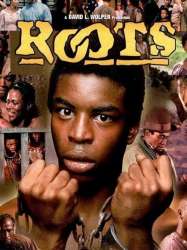
Roots (TV miniseries) (1977)
, 9h30Directed by Gilbert Moses, Marvin J. Chomsky, John Erman, David Greene, David Green
Origin USA
Genres Drama, Historical
Themes Films set in Africa, Films about slavery, Films about racism
Actors John Amos, Ben Vereen, LeVar Burton, Louis Gossett Jr., Georg Stanford Brown, Leslie Uggams
Roles Nyo Boto
Rating83%





In The Gambia, West Africa, in 1750 Kunta Kinte is born to Omoro Kinte (Thalmus Rasulala), a Mandinka warrior, and his wife, Binta (Cicely Tyson). When Kunta (LeVar Burton) reaches the age of 15, he and a group of other adolescent boys take part in tribal manhood training, ending with a ceremony, after which they become recognized as men and Mandinka warriors. While trying to carry out a task to catch a bird and take it home unharmed, Kunta sees white men carrying firearms, along with their black collaborators. Later, while fetching wood outside his village to make a drum for his younger brother, Kunta is captured by black collaborators under the direction of white men. He is then sold to a slave trader and placed aboard a ship under the command of Capt. Thomas Davies (Edward Asner) for a three-month journey to Colonial America. During the voyage a group of rebels among the human cargo try but fail to stage a mutiny and to take over the ship.

Porgy and Bess (1959)
, 2h18Directed by Otto Preminger
Origin USA
Genres Drama, Musical theatre, Musical, Romance
Themes Films about music and musicians, Films about classical music and musicians, Jazz films, Musical films, Films based on plays, Films based on operas
Actors Sidney Poitier, Dorothy Dandridge, Sammy Davis Jr., Pearl Bailey, Diahann Carroll, Brock Peters
Roles Dancer
Rating69%





Set in the early 1900s in the fictional Catfish Row section of Charleston, South Carolina, which serves as home to a black fishing community, the story focuses on the titular characters, crippled beggar Porgy, who travels about in a goat-drawn cart, and the drug-addicted Bess, who lives with stevedore Crown, the local bully. While high on cocaine supplied by Sportin' Life, Crown kills Robbins after the latter vanquishes him in a craps game; Bess urges Crown to flee. Sportin' Life suggests she accompany him to New York City, an offer Bess declines. She seeks refuge with her neighbors, all of whom refuse to help her. Porgy finally agrees to let her stay with him.
Director
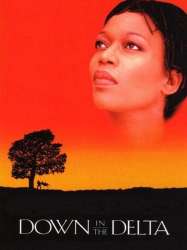
Down in the Delta (1998)
, 1h52Directed by Maya Angelou
Origin USA
Genres Drama
Actors Alfre Woodard, Al Freeman Jr., Esther Elizabeth Rolle, Mary Alice, Loretta Devine, Wesley Snipes
Rating68%





Rosa Lynn, an elderly woman, sends her daughter Loretta and her children to live with her brother-in-law in Mississippi. Loretta is an addict and does not want to go, especially since uncle Earl lives in the dry and rural part of Mississippi.
Scriptwriter

The Black Candle (2009)
Directed by M. K. Asante
Genres Documentary
Themes Films set in Africa
Actors Maya Angelou, Chuck D
Rating67%





The Black Candle uses Kwanzaa as a vehicle to explore and celebrate the African-American experience.

Sister, Sister (1982)
, 1h38Directed by John Berry
Origin USA
Genres Drama
Actors Diahann Carroll, Irene Cara, Rosalind Cash, Dick Anthony Williams, Paul Winfield, Robert Hooks
Roles Writer
Rating77%





The story starts out with Caroline Lovejoy (Carroll) singing in the church choir at the local church. It is later revealed that she is having an intense affair with the church's reverend. She later comes home to find her younger sister, Sissy (Cara), with her boyfriend, Johnny. It is expressed that Sissy is an aspiring ice skater, but Caroline wants her to follow in her footsteps and become a schoolteacher.
 , 1h36
, 1h36Directed by Fielder Cook
Origin USA
Genres Drama
Actors Paul Benjamin, Esther Elizabeth Rolle, Diahann Carroll, Ruby Dee, Roger E. Mosley, Madge Sinclair
Roles Writer
Rating69%






Georgia, Georgia (1972)
, 1h31Directed by Stig Björkman
Genres Drama, Romance
Actors Dirk Benedict, Stig Engström, Minnie Gentry, Vibeke Løkkeberg, Diana Sands
Roles Writer
Rating65%





Production

Sister, Sister (1982)
, 1h38Directed by John Berry
Origin USA
Genres Drama
Actors Diahann Carroll, Irene Cara, Rosalind Cash, Dick Anthony Williams, Paul Winfield, Robert Hooks
Roles Producer
Rating77%





The story starts out with Caroline Lovejoy (Carroll) singing in the church choir at the local church. It is later revealed that she is having an intense affair with the church's reverend. She later comes home to find her younger sister, Sissy (Cara), with her boyfriend, Johnny. It is expressed that Sissy is an aspiring ice skater, but Caroline wants her to follow in her footsteps and become a schoolteacher.
Sound

Georgia, Georgia (1972)
, 1h31Directed by Stig Björkman
Genres Drama, Romance
Actors Dirk Benedict, Stig Engström, Minnie Gentry, Vibeke Løkkeberg, Diana Sands
Roles Music
Rating65%





 Connection
Connection

